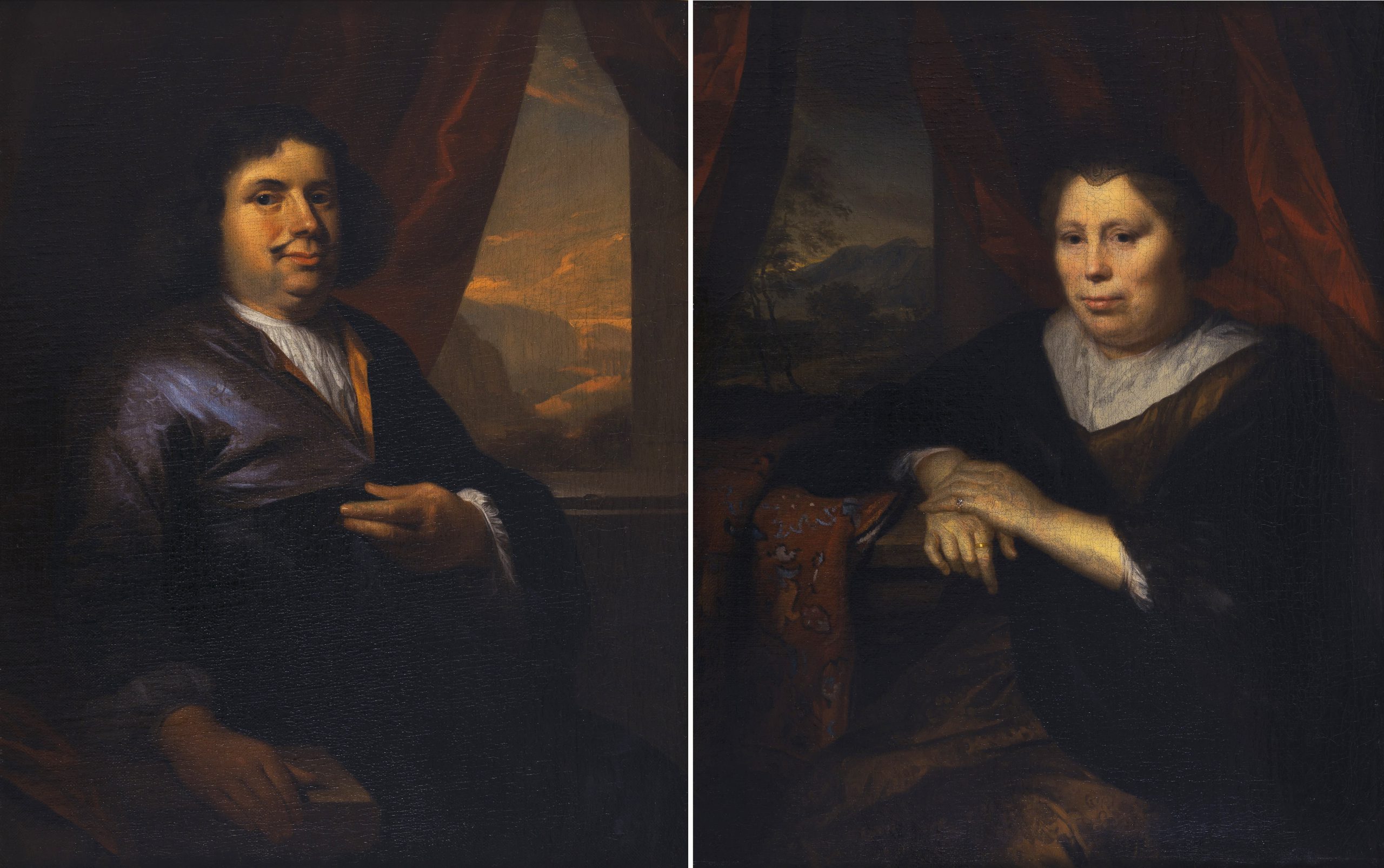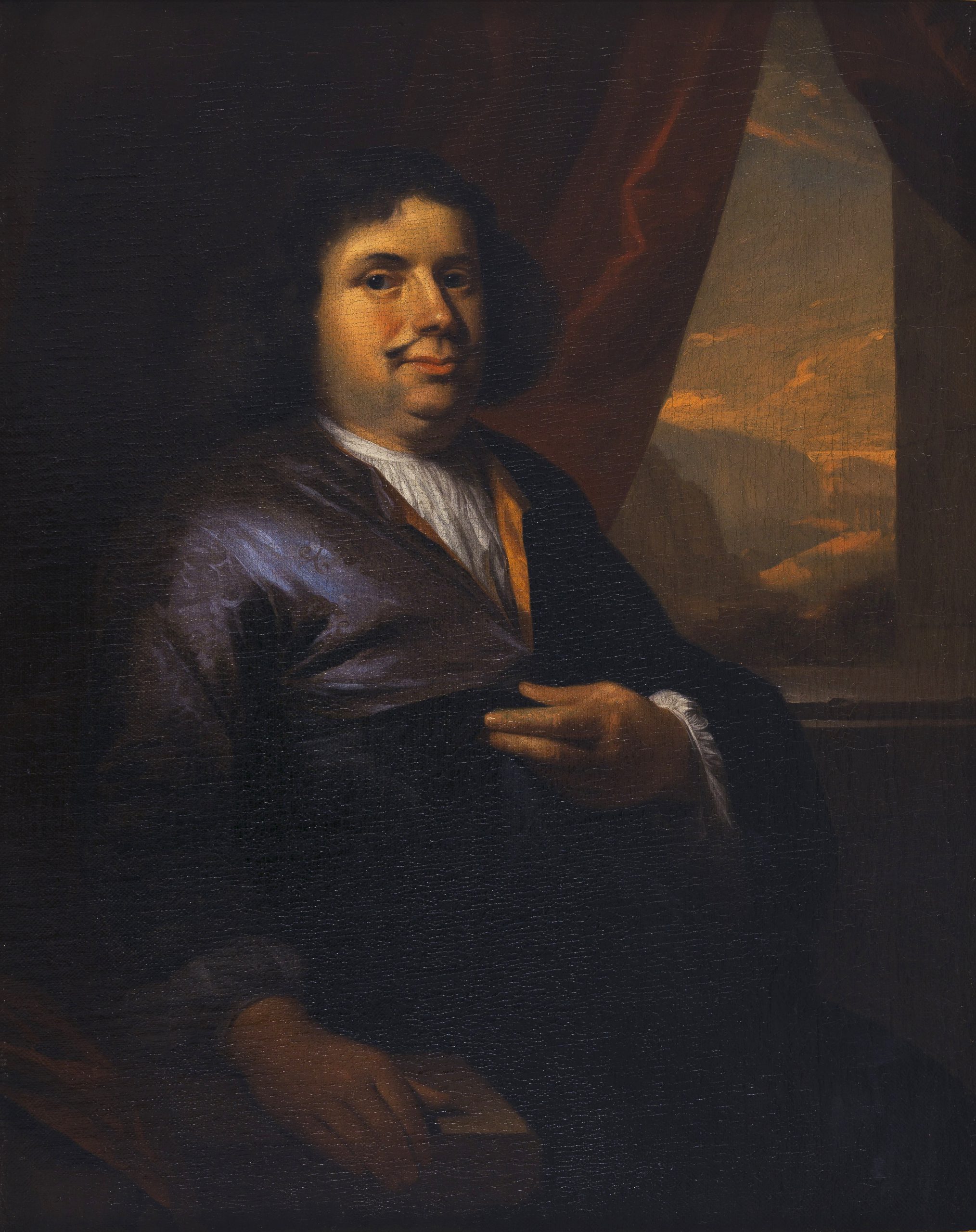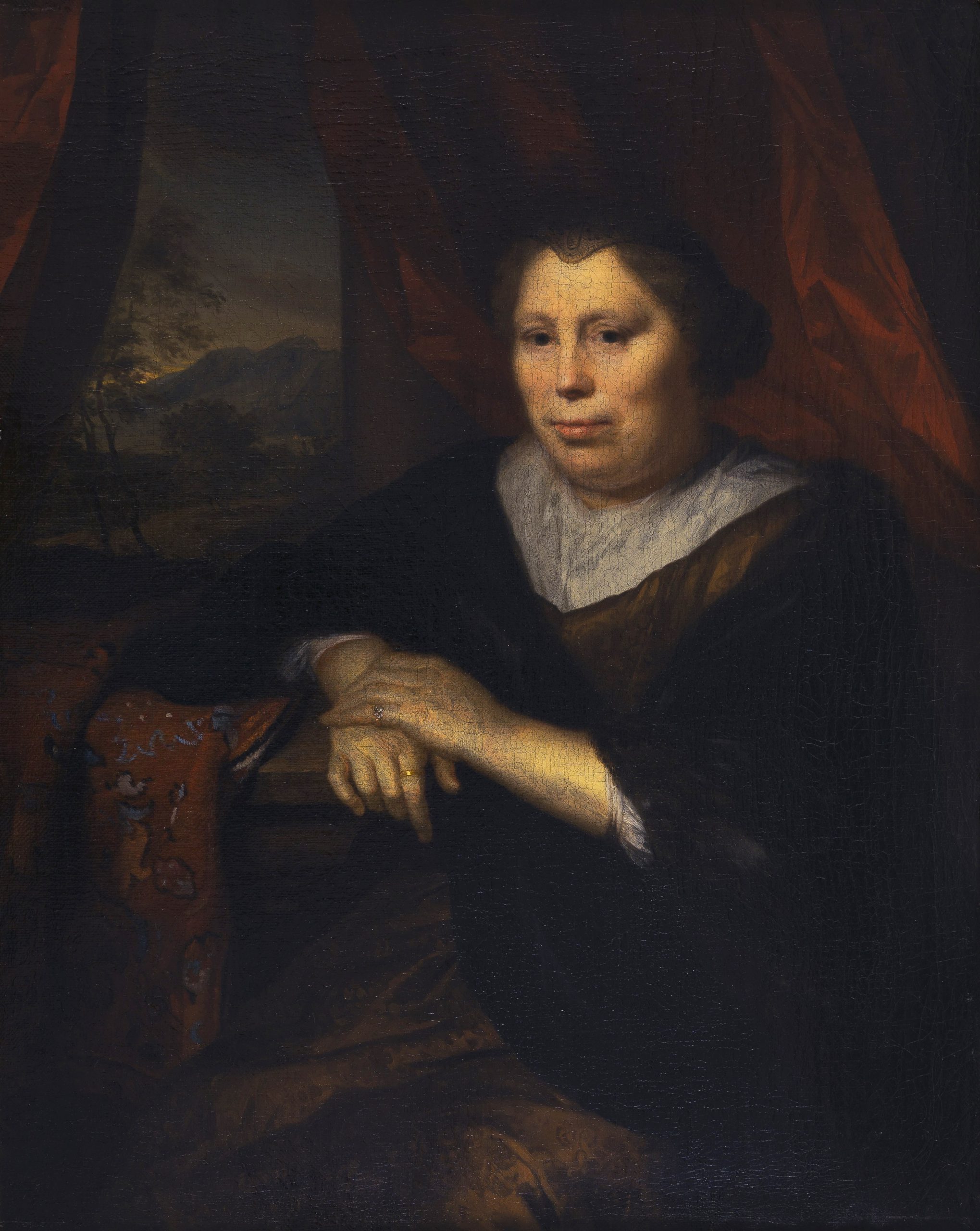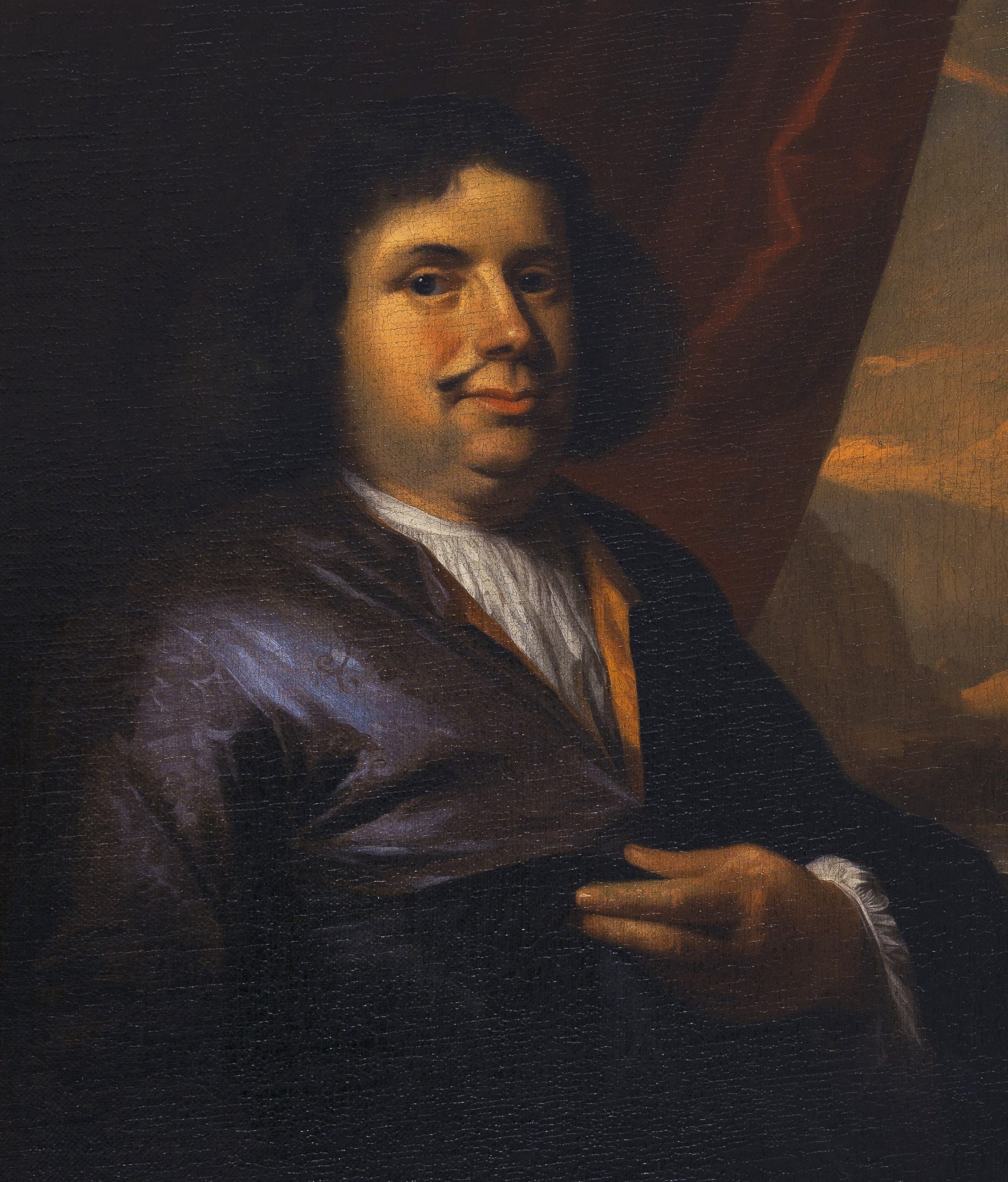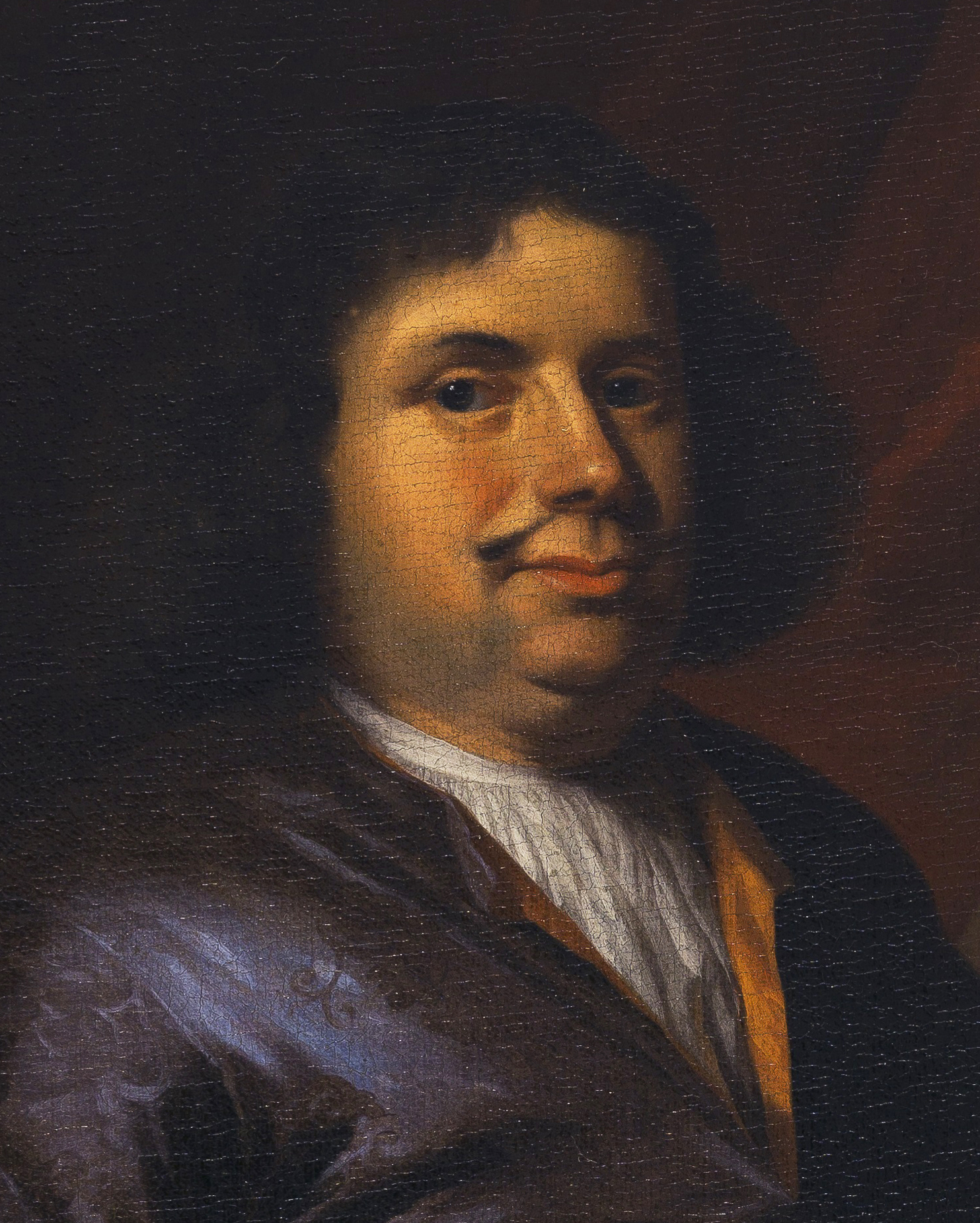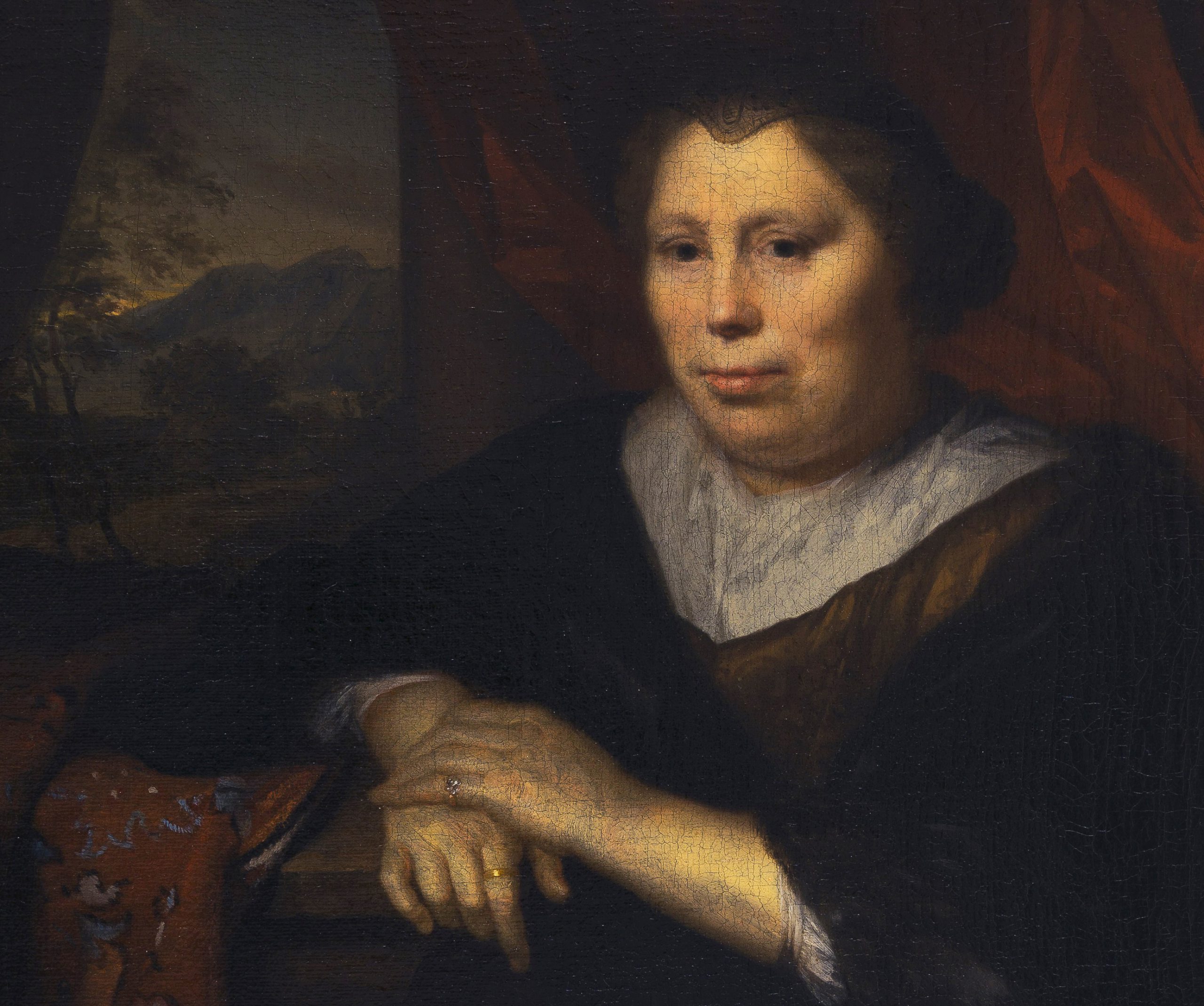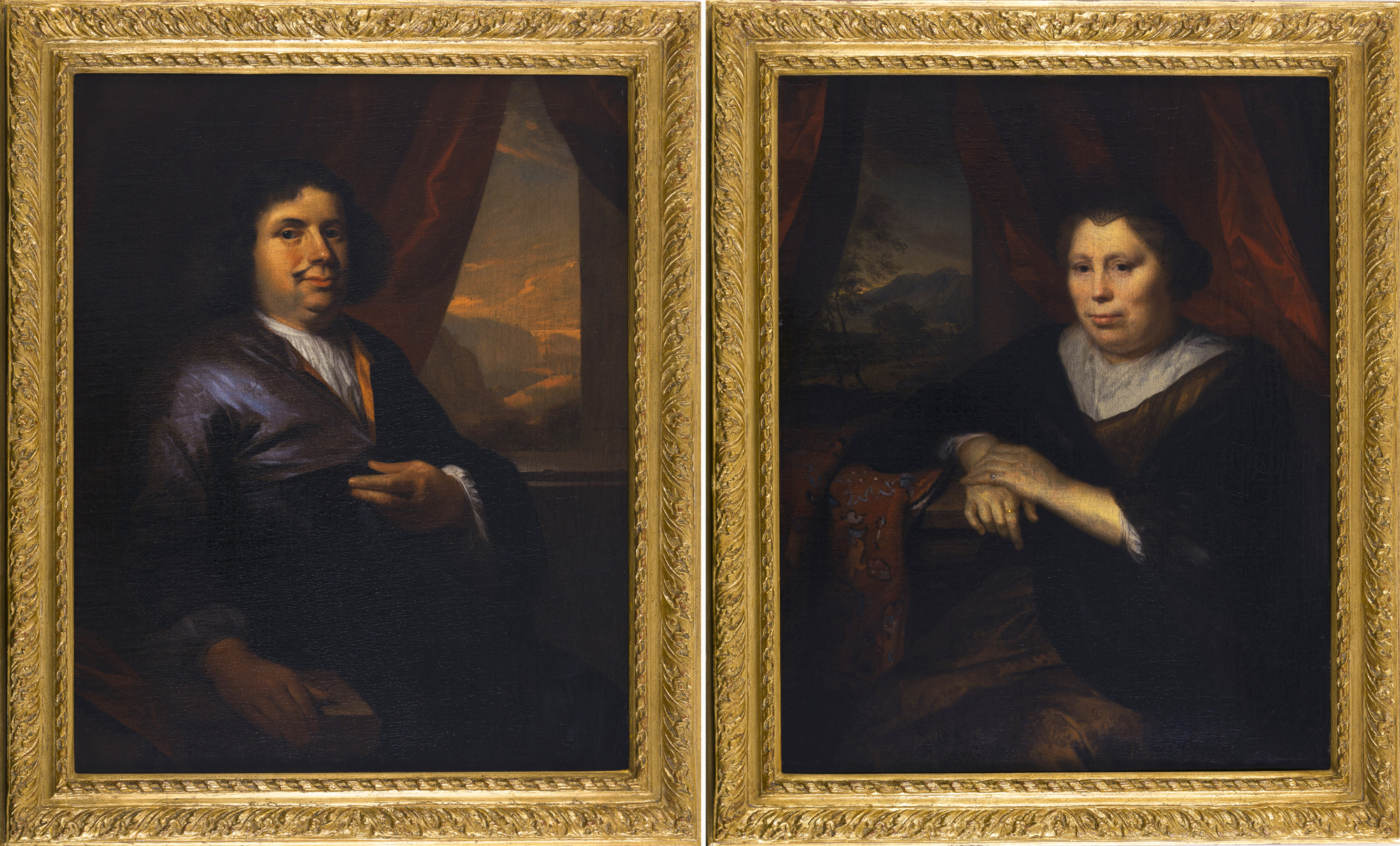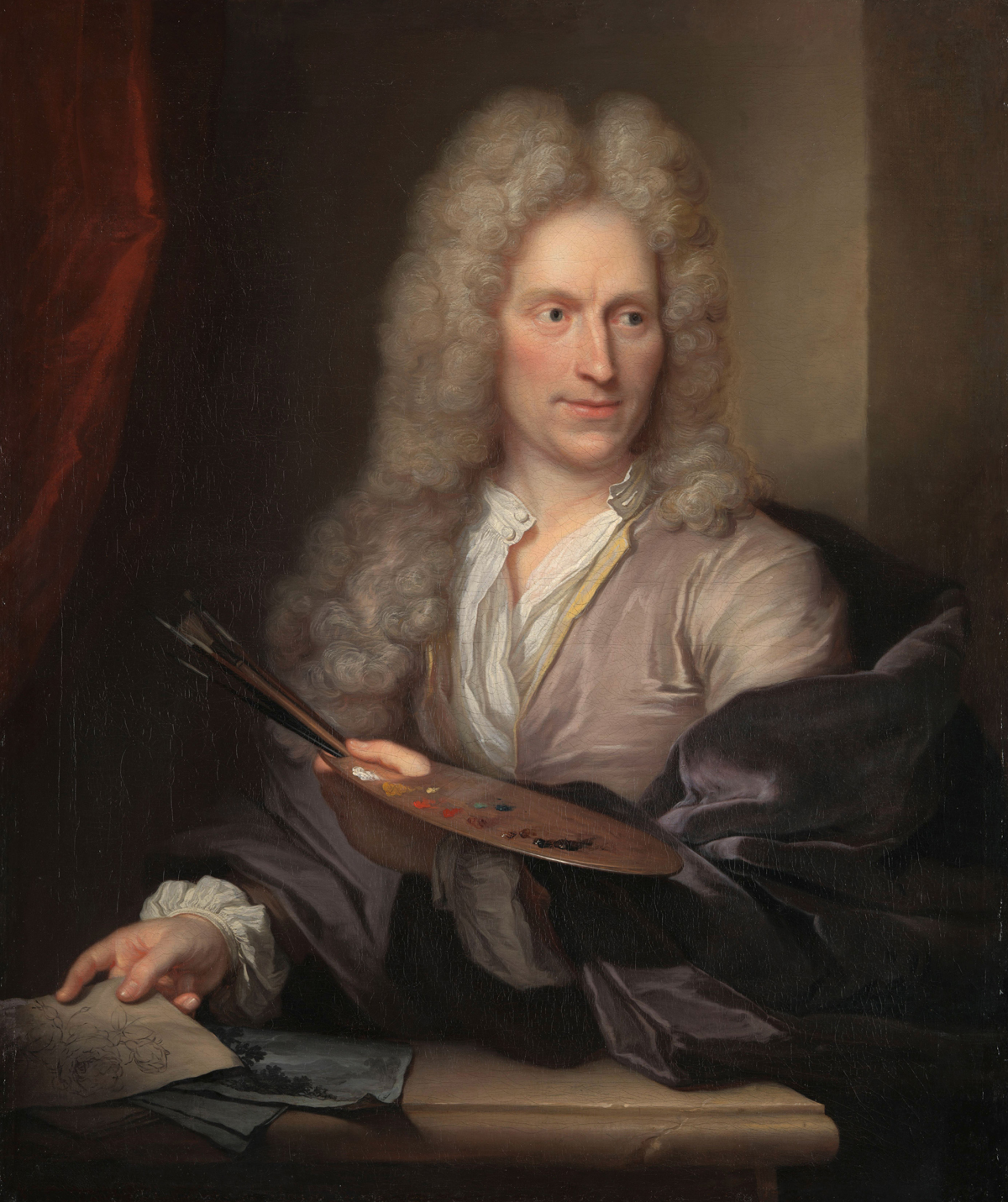ARNOLD BOONEN (Dordrecht 1669 – 1729 Amsterdam)
Arnold Boonen (Dordrecht 1669 – 1729 Amsterdam)
Portrait of a Gentleman and Portrait of a Lady
Both oil on canvas, 42.5 x 34 cm (16.7 x 13.3 inch); presented in giltwood frames of early 18th-century model
The first indistinctly dated ‘Ao 1694’ (centre right), the second indistinctly signed ‘A. Boonen’ (upper right)
Provenance
~ Private collection, Oldenburg, Germany
~ Acquired by the Kunsthalle, Bremen, Germany, in 1900 from the above collection, inv. nos. 1900-227 and 1900-228, and deaccessioned in 19901
~ Anonymous sale, Dorotheum, Vienna, 12 December 1990, lots 356 and 357, repr.
~ Private collection, Germany
~ The Juli and Andrew Wieg Collection, The Netherlands
***
A gentleman and his lady are seated on a terrace, its stone balustrade overlooking an idyllic Mediterranean landscape, illuminated by a warm Southern light. The terrace is partly draped by rich red curtains, which draw the attention to the sitters’ faces – the man looks at the beholder confidently, wearing a comfortable purple silk ‘Japonsche Rock’ housecoat, with delicate damask patterning. His eyes are quizzical, his mouth with a touch of arrogance, an impression enhanced by his thin and fashionable moustache. His lady is more sensitive, depicted with an air of surprise, her hands protectively folded, leaning on a ledge, partially draped by an Oriental rug. Though both sitters are depicted at three-quarter length, to the knees, the paintings are fairly small in scale, as was fashionable during the period, the very last years of the seventeenth century.
Born in Dordrecht, Arnold Boonen was first taught by the little known painter Arnold Verbuys in 1682.2 He continued his education in the studio of the celebrated Godefridus Schalcken, where he worked for six years. Around 1690 Boonen established himself as a master painter in the city of his birth, where he painted portraits of the elite. His fame rose quickly during a journey through the German princely states in 1695.
In 1696 Boonen settled in Amsterdam, where he became one of the most fashionable portraitists, favoured by the city’s wealthiest inhabitants, not unlike another Dordrecht painter, Nicolaes Maes, had done a few decades before. His fame was such, that in 1717 he received the prestigious commission to paint Czar Peter the Great and his wife. Boonen’s candlelit scenes were also highly popular.
Portraits by Boonen can be found in the leading museums of the world, including the Rijksmuseum in Amsterdam and the Mauritshuis in The Hague. Dated 1694, the present pair of portraits could either have been painted in Germany, as Boonen spent some months in the latter part of that year and the early months of 1695 travelling to Frankfurt-am-Main, Mainz and the Darmstadt court, or they could have been painted in Dordrecht before he left on his journey. Among the portraits he painted in Germany is a portrait of Lothar Franz von Schönborn (1654–1729), Prince-Elector of Mainz, preserved in the Landesmuseum in Mainz.3
In our rare and well-preserved pair of portraits, Boonen displays his technical abilities to the full. They are painted in the manner of the Leiden fine-painters, highly refined, and with an extraordinary level of detail. Though the paintings are portraits first and foremost, Boonen not only excels in the depiction of soft flesh, well-observed facial features and anatomically correct hands and arms, he also included fabrics of different textures, shining silks, lace, linen, fuzzy carpets, rich velvets, and furthermore the atmospheric landscape views in the background. The portraits are beautifully composed and though they are painted on two separate canvases and are independent works, the two are also related compositionally and enhance one another.
Our paintings, which for nearly a century were part of the collection of the Kunsthalle museum in Bremen, can be compared to Boonen’s portrait of the Dordrecht ‘schepen’ Pieter Everwijn (1665–1723), which is dated 1695,4 and also to his portrait of the flower painter Jan van Huysum, preserved in the Rijksmuseum in Amsterdam (fig.).5
Another portrait by Boonen sold previously by our gallery can be found here.
1. At the time of the 1990 sale in Vienna the paintings still had labels on the reverse of both works with the Kunsthalle inventory numbers, but these labels have since disappeared. We are grateful to Alexander Pütz of the Kunsthalle for confirming these painings were part of their collection, and for providing details of their deaccessioning. Other works from the collection of the Kunsthalle were deaccessioned in 1978, for instance a set of ten lithographs by El Lissitzky, sold at Sotheby’s, New York, Important Russian Art, 4 November 2010, lot 16.
2. For the artist, see A. van der Willigen and F.G. Meijer, A dictionary of Dutch and Flemish still-life painters working in oils: 1525-1725, Leiden 2003, p. 43.
3. Oil on canvas, oval, 31.5 x 27 cm, inv. no. 305, Verzeichniss der Gemälde-Sammlung der Stadt Mainz im Kurfürstlichen Schloss, Mainz, 1925, p. 18, cat. no. 136A.
4. Canvas, 45 x 35.5 cm, private collection, The Netherlands; E.W. Moes, Iconographia Batava: beredeneerde lijst van geschilderde en gebeeldhouwde portretten van Noord-Nederlanders in vorige eeuwen, Amsterdam 1897, no. 2438; RKD images no. 211207.
5. Oil on canvas, 99 x 84 cm, inv. no. SK-A-5008; see F. Meijer, ‘De Portretten van Jan van Huysum door Arnold Boonen en anderen’, in: Oud Holland, 108 (1994), no. 3, pp. 128-130, fig. 4.
